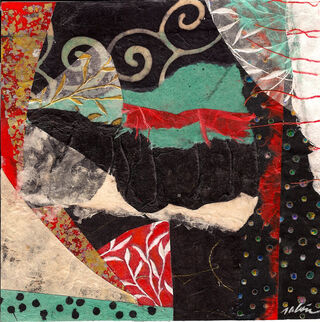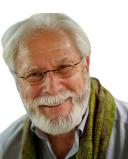Creativity
The Importance of the Aesthetic in Creativity
The aesthetic is the segue to being creative and well-being.
Posted May 28, 2022 Reviewed by Vanessa Lancaster
Key points
- The essence of creativity is resolving the impasses from double binds.
- Being creative is being aesthetic through a process of liminality and mutual learning with others.
- The key to creativity is to allow relationships to become immanent with emerging opportunities not dependent on narrow reasoning and content.
“For the attainment of grace, the reasons of the heart must be integrated with the reasons of the reason.”–Gregory Bateson
"Creativity is always an experiment."–Joyce Carol Oates

In the mid-1970s, when I was a doctoral student in Columbia University's graduate program of Family and Community Studies (Anthropology and Psychology), my original research proposal was on how mindfulness and creativity can enhance relationships.
In Columbia’s vast research library, there were only a few citations listed under mindfulness, and while there were examples of creative achievements, little on the actual in-depth interpersonal process of those endeavors. I was greatly indebted to my mentor and friend, anthropologist Paul Byers, who encouraged me to look further.
His research was on how people connected when communicating. He was a wonderful teacher, worked in collaboration with Margaret Mead, and taught his classes using Gregory Bateson's “steps to an ecology of mind.”
I eventually wrote my dissertation using Gregory Bateson's theory of the double bind and how creativity was stifled through communication discord that resulted from those unenviable stuck-between-a-rock-and-a-hard-place situations. In hindsight, this provided me with a way to understand how it is the essence of creativity, the outcome of resolving these impasses.
The double bind theory offers a reframing of contradictions by creating wider interdependent contexts based on relationships that transcend fragmentation and polarization. This is similar to how nature works, which is messy and beautiful at the same time, and it is not only relevant to our well-being but today’s political and global stalemates.
Gregory Bateson said that “The major problems in the world are the result of the difference between how nature works and the way people think." And we certainly have problems. It is as David Eagleman and Anthony Brandt mention in their book Runaway Species, “Mother Nature’s great success boils down to one principle: she proliferates options. She can never know in advance what will work in a new ecosystem (claws? wings? heat pits? bony plates?), so she test-drives an overindulgence of mutations to see what sticks.”
What I witnessed in my research and subsequent 40 years as a psychotherapist is that while double binds can be devastatingly painful, they are an opportunity to explore many new contextual adventures. As such, they provide an invitation to have a stereoscopic lens that allows one to simultaneously see the part and the whole as well as what nature has to offer. This takes mindfulness to a new level.
Problem-solving and mutually sharing are creative (i.e., poetry, painting, cooking, music, dance, loving, etc.) This process becomes a systemic driving ethos of our future. Its focus is not on the parts of a system but on what is relational between the parts, including each of us.
It offers improvisational possibilities to go beyond cultural constraints and linear thought processes. It comes to fruition at those ever-present liminal moments, where what has been submerged and unheard emerges, giving rise to how we evolve.
This transitional place is where patterns are connecting, dichotomies dissolving, life emerging, yet recontextualizing, etc. It is that terrain where infinite unique narratives expand relational opportunities within the messy/beautiful beginnings. Each day and moment becomes a widening therapeutic perspective.
Martha Graham once urged that,
There is a vitality, a life force, an energy, a quickening that is translated through you into action, and because there is only one of you in all of time, this expression is unique. And if you block it, it will never exist through any other medium and it will be lost.
This is further asserted by Georgia O’Keeffe that “whether you succeed or not is irrelevant [because] making your unknown known is the important thing — and keeping the unknown always beyond you,”
When we, according to Eagleman and Brandt in their book The Runaway Species (2017), understand our:
capacity to reach beyond the facts we’ve learned, we open our eyes to the world around us but envision other possible worlds." And further our ‘brain strives to incorporate new facts into its model of the world. It always seeks novelty. The brain gets excited when it updates.
So how do we do creativity? It is through our attempts to be aesthetic and learn from each other. It's the closest humans can get to nature. The key is to allow relationships to become immanent with emerging opportunities not dependent on narrow reasoning and content.
It is hidden in the middle or gap between everyday inductive and deductive reasoning. It is what Gregory Bateson called abduction. Einstein referred to it as something between the known and the unknown, and in that space, all that has ever been or will be is waiting to be heard.
Abduction lets hypotheses be interrupted and allows our brain to guide us into experiencing imagination and possibilities, a unity of the good and the bad, where a pearl emerges from a troubled clam or an incredible statue from a slab of marble. It qualifies how nature works and how our species can be interdependent.
Our hypothalamus, pituitary, and adrenal axis thrive on living in security, seeking to soothe our vagus nerve, which glows with compassion when we close the gap between our interactions and nature.
It's a circular process, which is about patterns that connect. There's no beginning or no end to it because the content becomes dissolved into the context of relationships enhanced by empathy and warmth. Just as certain breathing cadences allow our heart to beat in optimal ways, our quest is to stop and allow what Nora Bateson describes as “aphanipoiesis,” where life coalesces.
Alan Lightman spoke to it when he wrote in his book Possibilities; “The boundary between the known and the unknown is not a static boundary. It moves as we acquire new knowledge and understanding.”
Recognizing the unseen is to have creativity’s art tending the soil of our evolution to heal ourselves, the world, and others. David Zwirner recently wrote in a New York Times opinion piece, which I believe relates to all artistic expressions,
Great art is, by definition, complex, and it expects work from us when we engage with it. There is this wonderful moment, one that I have missed so much lately, when you stand before a work of art and, suddenly, the work is speaking back to you.
Great works carry with them so many messages and meanings. And often those messages survive for centuries. Or — even more mysteriously — they change as the years and decades pass, leaving their power and import somehow undiminished.
I would like to propose some ingredients based on the above, a recipe. Savor being in the present using a systemic lens to dissolve conflicts; be in supportive environments that allow the celebration of a multitude of improvisational possibilities, and be able to pause to listen to what needs to be heard from that collective reservoir of knowledge.
Most of all, remember the importance of the aesthetic, the segue to being creative and well-being.




